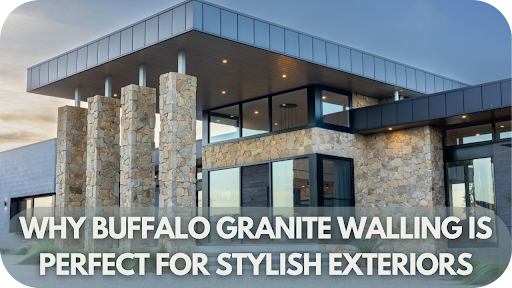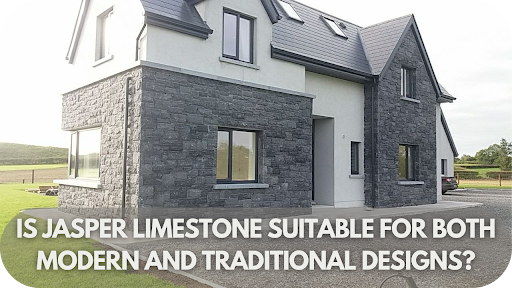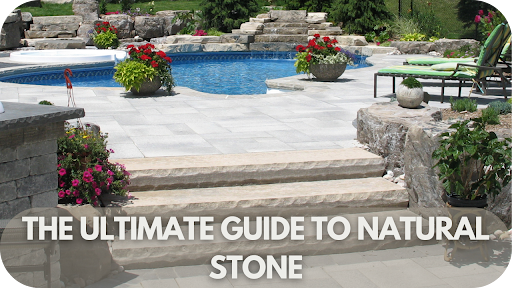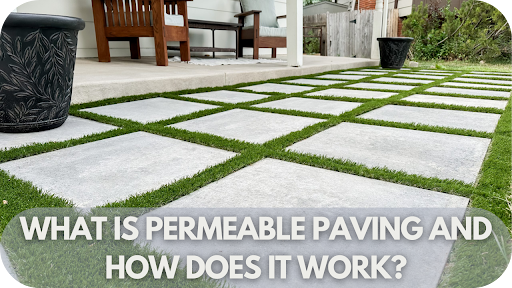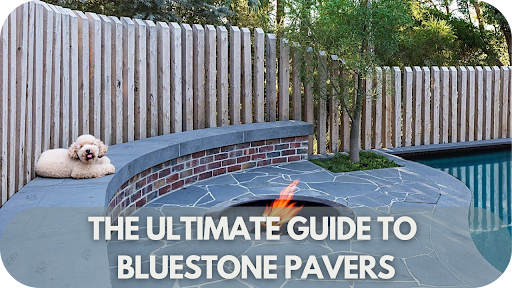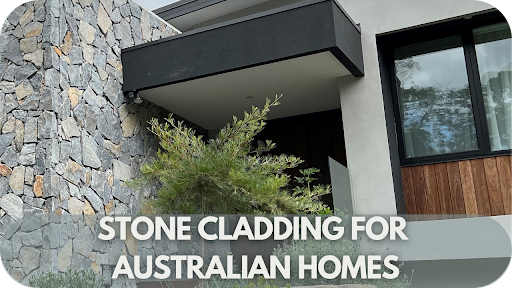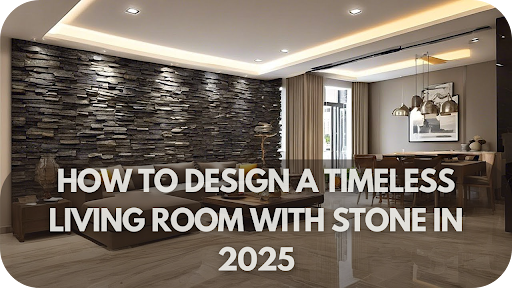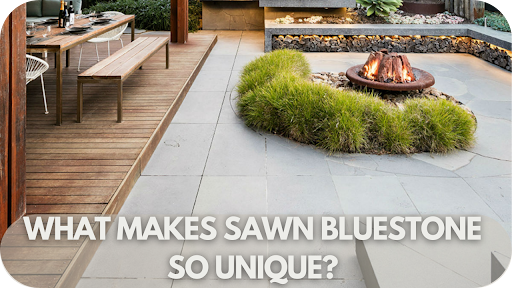Why Buffalo Granite Walling is Perfect for Stylish Exteriors
Imagine a wall that not only stands the test of time but transforms your exterior into a masterpiece of elegance and durability.
Buffalo Granite Walling does just that. Its rich textures and timeless appeal capture homeowners and designers alike.
But what makes this natural stone so perfect for stylish exteriors? Is it the unmatched resilience, the unique character of each stone, or the way it seamlessly blends modern and classic aesthetics? Keep reading to uncover why Buffalo Granite is the ultimate choice for exterior walling.
What is Buffalo Granite Walling?
Buffalo granite walling is a premium natural stone material known for its rugged durability and timeless aesthetic appeal. It is characterised by unique textures, natural colour variations, and a high-density structure that makes it ideal for exterior applications.
Extracted from quarries and cut into blocks or tiles, Buffalo granite is versatile and complements various architectural styles, from modern minimalism to rustic designs.
Its ability to withstand harsh weather conditions, resist wear and tear, and require minimal maintenance makes it a popular choice for facade cladding, garden walls, and outdoor features.
Whether used as a statement piece or to harmonise with other materials, Buffalo granite walling offers a sophisticated yet durable solution for stylish and long-lasting exterior designs.
The Key Benefits of Buffalo Granite Walling: Enhancing Stylish Exteriors
Buffalo Granite Walling combines beauty, durability, and minimal maintenance, making it ideal for enhancing stylish exteriors. Its timeless appeal and lasting performance ensure your space stands out while remaining resilient. Here’s why Buffalo Granite is the perfect fit:
1. Unique Aesthetic Appeal
Buffalo Granite Walling exudes a unique aesthetic appeal that transforms exteriors into timeless works of art.
Buffalo Granite’s natural texture and intricate colour variations, ranging from subtle greys to rich earthy tones, create a striking visual impact. Its beauty lies in its ability to complement diverse architectural styles—be it modern minimalism, rustic charm, or contemporary sophistication.
Its organic appearance lends an air of elegance, making it an ideal choice for stylish façades and feature walls. Whether enhancing sleek urban designs or blending seamlessly with natural landscapes, Buffalo Granite adds character and depth to any project, ensuring an exterior that’s as distinctive as it is enduring.
2. Durability and Weather Resistance
Buffalo Granite Walling is synonymous with durability and unparalleled weather resistance, making it a top choice for exterior projects.
Renowned for its incredible strength, this natural stone effortlessly withstands harsh climatic conditions, from relentless rain and scorching heat to freezing snow.
Unlike many other exterior materials, Buffalo Granite maintains its structural integrity and appearance over decades, resisting cracking, fading, and erosion. Compared to alternatives like brick or concrete, its longevity is unmatched, offering superior performance and minimal maintenance.
With Buffalo Granite, your stylish exterior remains as striking and robust as the day it was built, no matter what nature throws at it.
3. Low Maintenance and Easy Care
Buffalo Granite Walling is prized for its beauty and low maintenance requirements, making it an effortless choice for stylish exteriors.
Its natural resistance to staining, dirt, and environmental wear ensures it retains its charm with minimal effort. Unlike materials that demand frequent upkeep, Buffalo Granite only needs an occasional rinse with water or a mild detergent to maintain its fresh, pristine look.
Its dense composition repels moisture, reducing the risk of mould or mildew. A simple sealing every few years can enhance its longevity further, keeping it looking vibrant and polished. With Buffalo Granite, you enjoy a timeless, elegant exterior without the burden of constant care.
4. Versatility in Design Applications
Buffalo Granite Walling offers remarkable versatility, making it a favourite for various exterior design applications.
Its robust and elegant appeal is ideal for cladding, creating striking façades that enhance the architectural beauty of homes and commercial properties. As feature walls, it becomes a focal point, exuding sophistication and timeless charm.
Its natural texture blends seamlessly with outdoor aesthetics in garden borders or landscape designs. Buffalo Granite pairs beautifully with other materials like wood, glass, or steel, allowing for contemporary combinations that elevate modern designs.
Whether creating a rustic retreat or a sleek urban exterior, Buffalo Granite’s adaptability ensures it’s a perfect fit for every project.
5. Sustainable and Eco-Friendly Choice
Buffalo Granite Walling is a sustainable choice that aligns with the growing demand for eco-friendly building materials.
As a natural, non-toxic stone, it minimises environmental impact during extraction and use, unlike synthetic materials that often involve energy-intensive manufacturing processes.
Buffalo Granite’s exceptional durability reduces the need for replacements, further decreasing waste and long-term resource consumption.
Its ability to endure for decades translates into a lower carbon footprint for projects, making it a smart choice for eco-conscious homeowners. Choosing Buffalo Granite isn’t just about stylish exteriors—it’s a step toward a greener, more sustainable future.
6. Increasing Property Value
Investing in Buffalo Granite Walling is a surefire way to enhance property value, thanks to its blend of timeless beauty and unmatched durability.
Potential buyers highly seek out high-quality materials like Buffalo Granite, which offers an elegant aesthetic that stands out and a lasting structure that reduces future maintenance costs.
Its ability to elevate curb appeal makes it a standout feature for residential and commercial properties alike. Successful installations, such as striking facades or sophisticated feature walls, often increase buyer interest and higher resale prices.
As a homeowner with Buffalo Granite, you’re not just improving your exterior—you’re making a lasting investment in your property’s value and market appeal.
7. Cost-Effectiveness in the Long Run
While Buffalo Granite Walling may involve higher upfront installation costs than some materials, its long-term cost-effectiveness makes it a superior choice for exteriors.
Thanks to its exceptional durability, Buffalo Granite requires minimal repairs and maintenance over decades, significantly lowering ongoing expenses. Unlike materials that need frequent replacement or refinishing, its resilience ensures a consistently stylish appearance with minimal upkeep.
The return on investment (ROI) is evident in its enduring beauty and ability to increase property value. For homeowners and developers seeking a stylish yet practical exterior solution, Buffalo Granite delivers lasting quality, and the financial benefits far outweigh the initial cost.
Applications of Buffalo Granite Walling
Buffalo Granite is not only known for its beauty and durability but also for its versatility in various outdoor applications. Here are some of the best ways to incorporate Buffalo Granite into your exterior design:
1. Feature Walls
Buffalo Granite makes a striking feature wall for a home’s exterior, garden, or even commercial spaces. Its natural texture and rich colours create an eye-catching focal point that elevates the overall aesthetic of any property.
2. Cladding
Buffalo Granite is an excellent choice for cladding, offering a beautiful and durable finish for building facades. Its resistance to the elements ensures that it will retain its appearance and integrity, making it ideal for high-traffic areas and exposed surfaces.
3. Retaining Walls
With its strength and durability, Buffalo Granite is perfect for creating sturdy retaining walls in gardens, landscapes, or terraced areas. It provides both a functional solution to prevent soil erosion and a stylish addition to the overall design.
4. Garden Borders and Landscaping
Buffalo Granite adds an elegant, natural touch to garden borders, walkways, and pathways. Its ability to withstand the elements makes it ideal for outdoor spaces, where it can be used to delineate areas, create structure, and enhance landscaping.
5. Perimeter Walls
Whether around a property, pool, or garden, Buffalo Granite is perfect for constructing perimeter walls that combine security and style. Its natural look adds warmth and character to boundaries, offering an elegant yet functional solution.
6. Outdoor Fireplaces and Barbecues
Thanks to its heat resistance and aesthetic appeal, Buffalo Granite is popular for building outdoor fireplaces and BBQ areas. It brings a sophisticated, rustic charm to outdoor living spaces, making them both practical and visually stunning.
7. Driveway and Gate Pillars
The stone’s durability and aesthetic qualities make it an excellent choice for creating elegant gate pillars or decorative structures at the entrance of a driveway. It can withstand the weight and wear of vehicles while adding a lasting visual statement.
Maintenance and Care of Buffalo Granite Walling
Buffalo Granite Walling is incredibly low-maintenance, but a few simple care tips can help preserve its beauty and durability for years to come:
- Regular Cleaning: Wash the surface with water and a mild detergent to remove dirt and debris. Use a soft brush or cloth to avoid scratching the stone.
- Sealant Application: To protect the surface from stains and moisture, apply a high-quality stone sealant every 2-3 years.
- Rinse After Rain: Quickly rinse the wall after heavy rainfall to prevent dirt build-up and ensure a clean, fresh appearance.
- Avoid Harsh Chemicals: Avoid harsh cleaning products or acidic solutions, as they can damage the stone’s natural finish.
- Inspect for Cracks: Regularly check for any visible cracks or damage, especially after extreme weather, and repair promptly to prevent further deterioration.
- Prevent Moss and Mould Growth: Buffalo Granite’s dense nature helps resist mould, but in areas with heavy moisture, it ensures good drainage and clears debris to prevent accumulation.
Conclusion
Buffalo Granite Walling offers the perfect blend of elegance, durability, and low maintenance, making it an ideal choice for any exterior project.
Buffalo Granite’s versatility and natural beauty ensure it complements various architectural styles, while its resilience against the elements guarantees long-lasting performance. If you want to enhance your property with a stylish, durable solution, Buffalo Granite is the way to go.
Get in touch with Splendour in Stone today and transform your exterior with the timeless appeal of Buffalo Granite.

